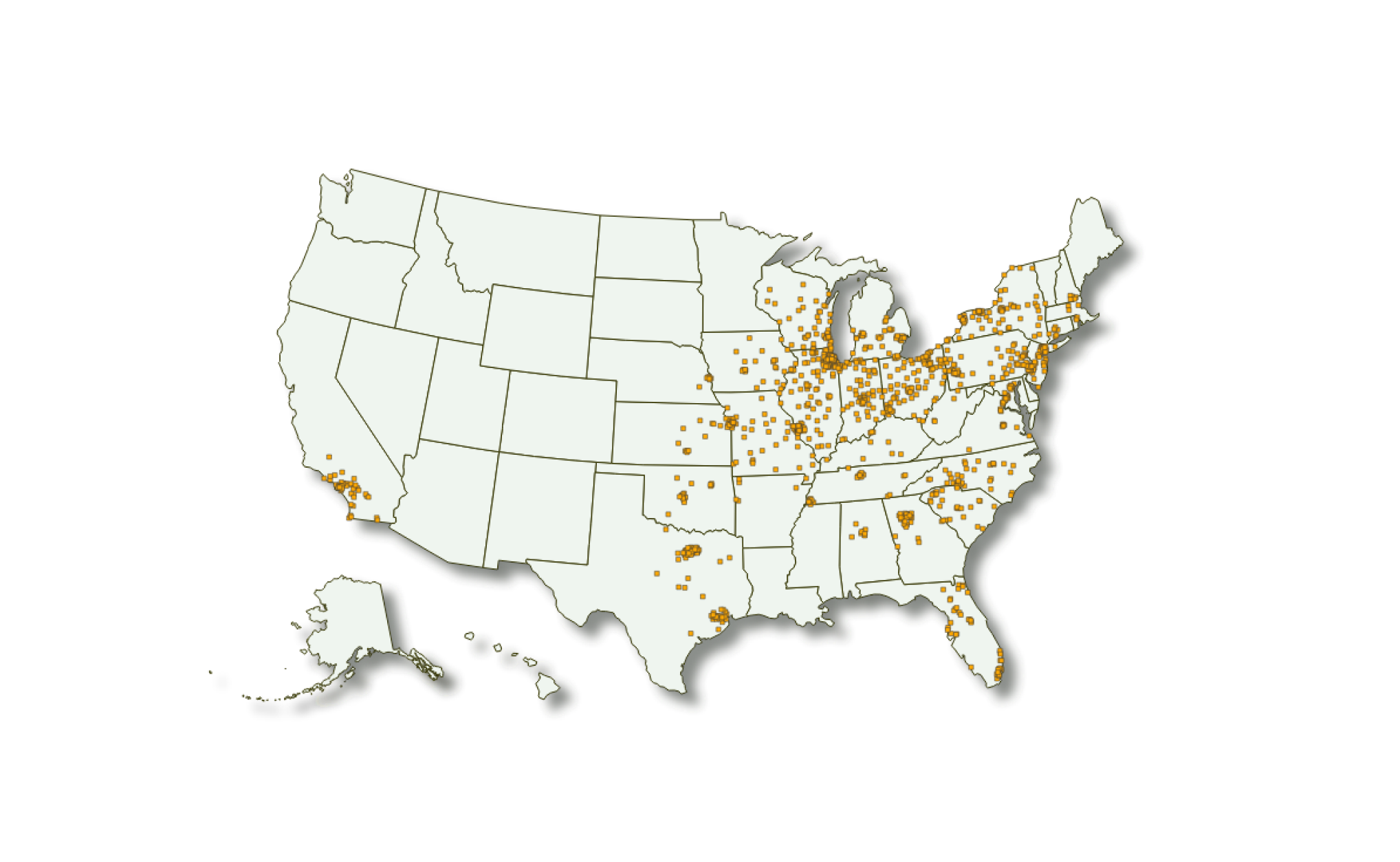Blog Post
Aldi, the German Grocery Store Taking Over America
We estimate that over a half-million Americans pass through the aisles at Aldi every day, and the fervor for the grocery chain is growing like wildfire. Some historical context is needed to understand the Aldi Boom and its implications on the US grocery market. The value Aldi has created for consumers by providing more and charging less is unparalleled, and the results are impressive.
A Lyft conversation about Aldi
In August, I shared a Lyft from O’Hare to downtown Chicago with a well-dressed 30 something year old (also) named Tom. Sharing the same age, name, and level of extraversion, we struck up a lively conversation until we passed an enormous billboard advertising Aldi. I intimately knew Aldi from my year as an exchange student in Germany, but I had never seen advertising for the grocery chain in the US. Inquisitively, I began to ask this Chicago native about Aldi. Had he ever heard of it? Had he ever shopped there? Does he know people who shop there? Is Aldi as loved in Chicago as it is in Germany? Why or why not? There was suddenly too much to ask and too much to garner from Tom in our short Lyft time together.
Tom visited Aldi for the first time a few months prior and he’s been back several times since. He repeatedly emphasized Aldi’s low-priced, high-quality items, wrapped in an idiosyncratic yet pleasant experience. While Tom was telling me this, our Lyft driver acutely listened in. He looked like he was ready to burst with excitement. I made eye contact with him in the rear-view mirror, giving him a subtle invitation into the conversation. With a big smile on his face, he blurted “Yeah! Unreal prices, excellent quality...just enough choice but not too much...it’s just great.” Two strangers described the same Aldi that I had came to know and love during my time in Germany. Nostalgia for the German Aldi and curiosity about the company’s US footprint grabbed my mind...
It turns out, Tom and our Lyft driver aren’t alone. We estimate that over a half-million Americans pass through the aisles at Aldi every day, and the fervor for the grocery chain is growing like wildfire. Some historical context is needed to understand the Aldi Boom and its implications on the US grocery market.
Germany was shattered after WWII. The tough economic climate created a wave of penny-pinching consumers…and an opportunity for a concept like Aldi to soar.
The rise of Aldi
In July, 1946, Karl and Theo Albrecht took over their mom's convenience store in Essen, Germany. The post-war economic conditions created ultra price-conscious consumers who could detect the slightest differences in prices between stores. To rise above the fold, Karl and Theo found unique ways to slash costs, like keeping their headcount low, removing merchandise from their shelves that didn’t sell, and not advertising. Their low-cost model worked, and Aldi was born.
Aldi quickly became Germany’s most successful grocery store, catapulting Karl and Theo to billionaire status. Aldi also has, in a stealthy and astounding way, become the fastest growing grocery store in the United States, and by 2022, is expected to be the 3rd largest grocery store in the country (after Walmart/Sam’s Club and Kroger). At the time of this writing, Aldi has more locations than Whole Foods, Costco, and Trader Joe’s combined and is opening more than 2 stores a week.
By 2022, Aldi is expected to be the country’s third largest grocery chain by number of stores.
Aldi creates value for consumers
Aldi is a different kind of grocery store. One that Walmart US CEO Greg Foran called “clever”, “good”, and “fierce” in a 2019 interview. For example, Aldi requires shoppers to insert a quarter to “unlock” their shopping cart; the only way to get this quarter back is by returning the cart to its rightful location. They charge a small fee for plastic and paper bags. And their seated checkout staff expect shoppers to bag their own groceries. These small inconveniences allow Aldi to reduce labor costs and improve efficiency, translating into savings for consumers.
Even more savings come from the focused stock of items and high-quality, lost-cost private label products. Aldi carries only about 1,400 items, which compares to roughly 40,000 items at a traditional grocery store. All together, consumers pay way less (up to 50%, depending on the item) than they do at traditional grocery stores and receive the same quality products (and in some cases, better quality). It’s simply more worth it to shop at Aldi than anywhere else.
The value Aldi has created for consumers by providing more and charging less is unparalleled, and the results are impressive: in addition to healthy profits and rapid expansion, Aldi has created an army of evangelists who sing the brand’s praises to family, friends, and online social circles (the Aldi Lovers Facebook group recently surpassed 50,000 members). The Aldi story underscores an important truth about value:
Value is a moving target; it’s not about beating yourself, it’s about beating others.
Companies like Aldi can and will deliver superior value that continually up the ante for winning market share. As they do, they are constantly resetting expectations for consumers.
Jeff Bezos said it best in his annual 2017 shareholder letters:
One thing I love about customers is that they are divinely discontent. Their expectations are never static – they go up. It’s human nature. We didn’t ascend from our hunter-gatherer days by being satisfied. People have a voracious appetite for a better way, and yesterday’s ‘wow’ quickly becomes today’s ‘ordinary’. I see that cycle of improvement happening at a faster rate than ever before [...]. You cannot rest on your laurels in this world. Customers won’t have it.
Bezos is accurately proclaiming that as companies and markets mature, value elements that once were differentiators become “table stakes”. And he should know. Amazon has completely transformed what consumers expect in an eCommerce experience — fast & cheap shipping, everyday low prices, and a frictionless checkout process.
Think back (if you can) to 1999 when you placed an online order. You were probably impressed by the ease with which you could find and buy an item. You likely noted how “convenient” it was to have it shipped right to your door - no wasting gas or time running to the store. And to receive your item within 5-7 business days? Awesome! Fast-forward to today. You place an order on Monday and expect it by Tuesday or Wednesday. Two day shipping has gone from an impressive benefit to...normal. In fact, it’s expected.
Amazon has completely reshaped our expectations around shipping time, making 2 day shipping the new “table stakes”
Amazon has completely reshaped our expectations around shipping time, making 2 day shipping the new “table stakes”.
Concluding words
Aldi will continue reshaping consumer expectations around price and quality as it extends its footprint across the country. The Aldi Boom underscores an important insight about business in the modern world: You don’t need high-tech solutions, influencer marketing, or fancy frills to win a market. The everlasting path to winning the dollars and loyalty of customers is by providing value that is head-and-shoulders above the rest.
We are passionate about this topic and would love to answer any questions you might have. Click below to schedule a complimentary 30 minute call with an expert from Langston.
DISCLAIMER: We base our research, recommendations, and forecasts on techniques, information and sources we believe to be reliable. We cannot guarantee future accuracy and results. The Langston Co. will not be liable for any loss or damage caused by a reader's reliance on our research.





